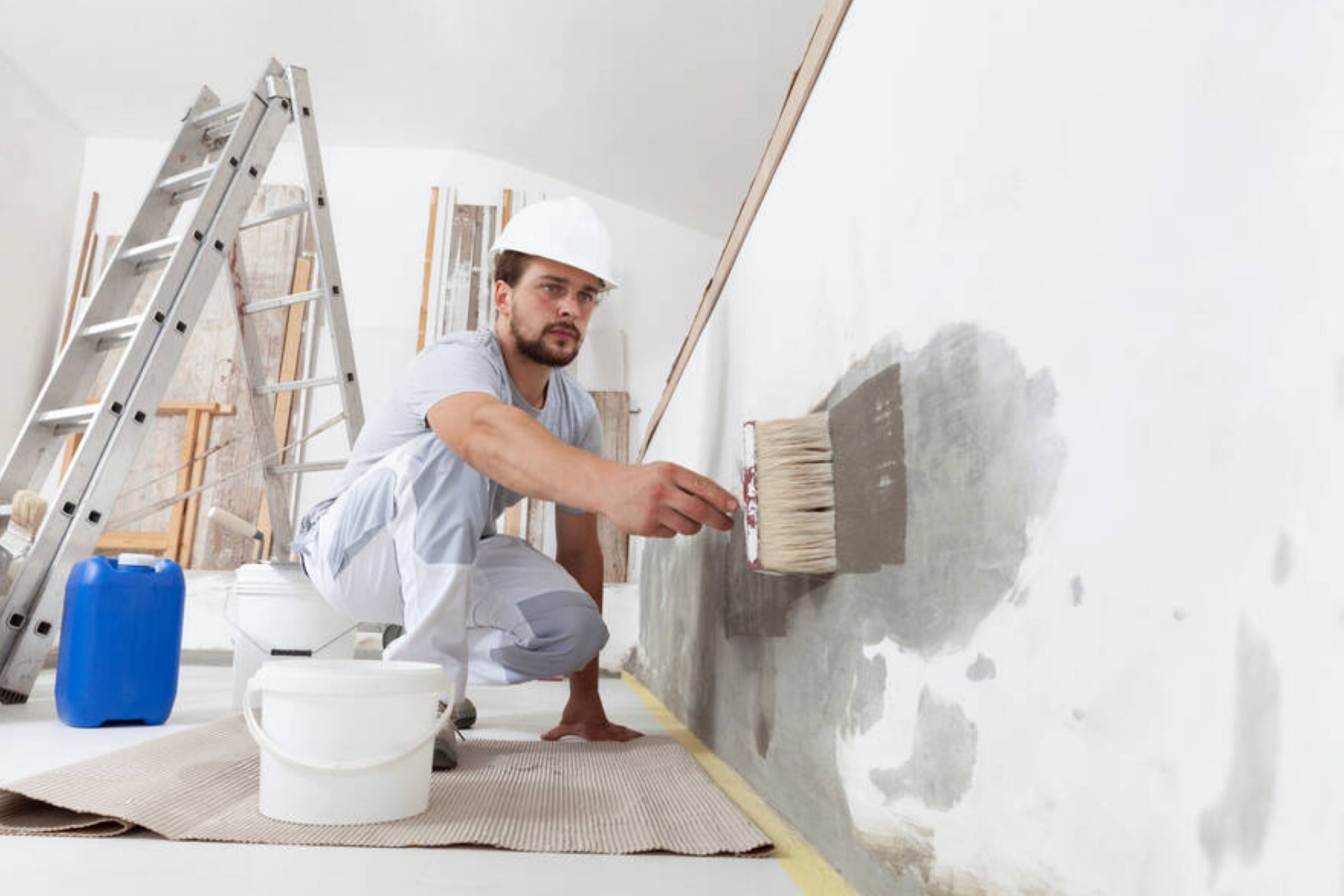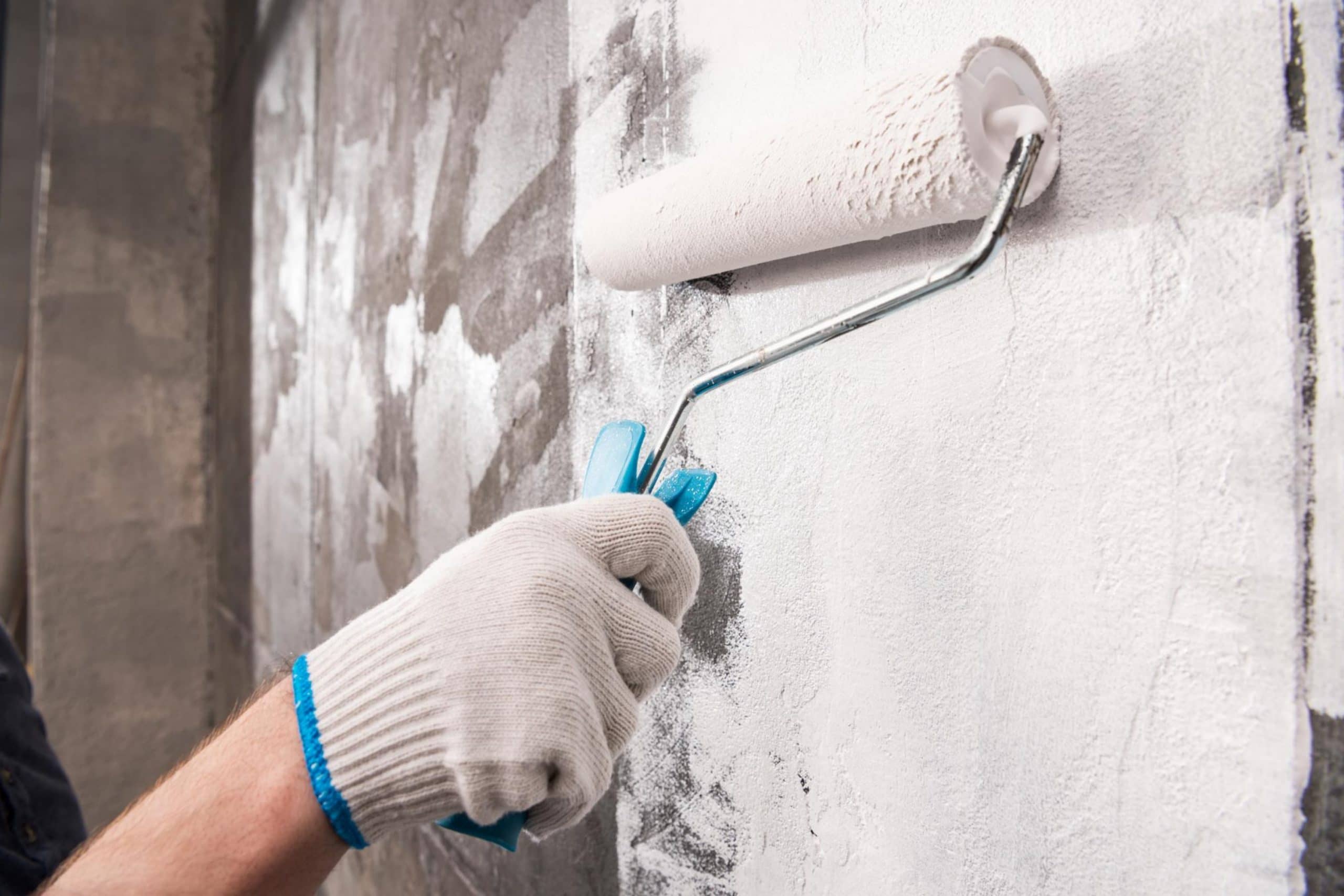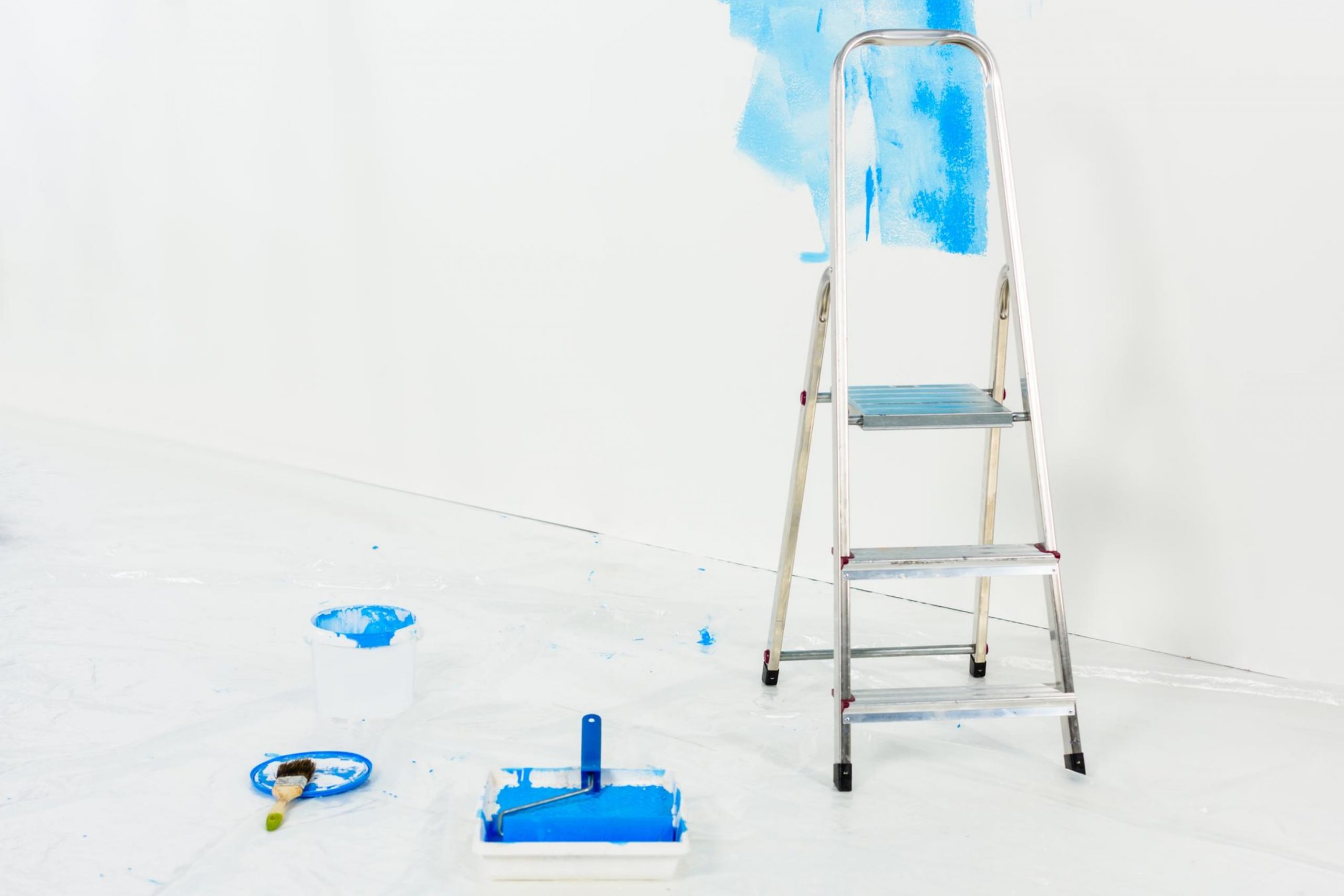We may live or work in the same space for years without even assuming that there is a dangerous enemy under the paint on the walls!
Yes, we are now talking about mold. And if it is pretty easy to notice it and get rid of it in your own home, if you are going to rent or buy a new one, you may have certain complications. For example, if the previous owner or a landlord has simply had mold painted over!
But how to tell if there is mold under the layer of paint on the walls, you may ask?
Well, in this article, you will find the answer. We are going to tell you not only how you can define mold on your walls even if paint covers it.
Also, we will tell you whether or not paint can actually kill the mold, and what hazards the spores of mold bring if they remain in your home. Finally, you are going to find out why mold appears in our homes and in commercial buildings, and what we shall do should we spot it on the walls.
How to Tell If Your Landlord Painted Over Mold?
To begin with, painting over mold is not the best way to fight this disaster. In fact, applying paint over the mold infestation will not help you solve the problem at all. Even if the paint is mold-resistant.
But if you can control this at least somehow and cope with mold in your own home, when entering a commercial building or when buying a new home or apartment, you can’t be absolutely sure that the owner or a landlord did not just paint over the moldy areas on the walls to hide the issue!
Luckily, even if mold was painted over, there are still several things you can do in order to spot the nasty molded areas and manage this problem.

Search For Any Spots With a Yellow Hue
When people are looking for buyers or new tenants, they typically paint walls a light, neutral color.
And if all of you already know well that a light brown stain on the ceiling might be the sign of a moisture problem above, in case the walls have a yellow tinge as well, you should get worried and alerted!
See, if you can see those yellowish spots in one or more areas on the walls, that is a significant sign showing that there is water damage and even a possible mold growth!
See If Paint Is Cracked, Peeling, Bubbling, Or Chipped
Everyone knows that fresh paint never starts bubbling or peeling off the wall for no reason.
Of course, you may say that it could happen if the paint was improperly applied or the wall was not prepared thoroughly for the paint application.
However, in the majority of cases, it can only happen if there is something on the surface that is preventing it from adhering properly. The most likely cause is moisture that is hidden beneath the layer of paint.
And where there is a moisture problem inside a building, you should expect mold as well, since it will almost certainly follow.
An Uneven Wall Surface might Be the Sign
Let’s be honest, when we live or work in the same building for a long time, we become accustomed to different defects on the walls. And most often we just explain those imperfections and defects by the fact that the building is old.
However, this is the direct way to overlook a section of drywall that might have mold!
See, if a part of the wall is bulging out, it could have been caused by significant water damage and a mold colony on the other side. So you should always pay close attention to such “suspicious” areas when moving into a new house/apartment, or when buying one.
Like this, you are now informed about the most common and the most obvious signs of mold damage that can be found on the walls even if there is a layer of paint applied over them.
So if you are going to buy or rent a house or an apartment, and you notice any signs like those we have just described, you should either ask an owner/a landlord whether it is mold underneath, or you might even want to search for another, mold-free option instead.
Does Painting Over Mold Kill It?
This is the question that people ask quite frequently, especially when they face the issue of moldy walls being simply painted over. Or if they have such walls at home but for some reason, they would rather paint them over instead of fixing the issue.
The short answer to this question is no. Painting doesn’t kill mold. Paint will only be able to conceal the dark patches or stains caused by mold. However, it will not cause any damage to the colony of mold. And it also does not matter what type of paint you use.
If a wall or any other surface that is infested with mold is simply painted, the mold will most likely reappear on top of the color later.
You have to fix the problem first, and only then paint can be applied to the treated and mold-free walls. Even if you use mold-resistant paint, it won’t be able to kill the current mold that you have. In fact, it will not be able to cause any damage to it at all.
Moreover, if you paint your moldy walls, later on, the color will begin to peel, bubble, and chip.
This will happen simply because of the mold issue and moisture issue underneath! So, as you can see, it is not productive at all to try and paint over mold growth without fixing the mold problem first.
What Makes Mold Dangerous In Our Homes?
As you have already found out, applying paint over black mold (or over any other type of it) will not fix the problem. Instead, you can only make things worse since the hidden mold colonies will keep on spreading anyway, thus causing more and more harm to you!It is a well-known fact that mold is dangerous. However, not all of us are aware of what exactly makes this microorganism be like this.
This is why, if you already have issues with mold in your home or office, you should be informed about all the possible damage that may come with this problem.
So what is it so bad about the mold spores that makes it such a nasty thing?
See, if a person is being exposed to mold spores (especially to a large number of them) for an extended period of time, it may cause different health issues, most likely, one will start suffering from various allergic symptoms. Among the most common ones, you can find the following:
- watery eyes
- runny nose
- sneezing
- itching
- coughing
- wheezing
- difficulty breathing
- headache
- fatigue
And the longer one is exposed to mold the higher a person’s sensitivity can be. As a result, constant exposure to mold may cause more severe allergic reactions.
So even if you have good health and you are not allergic to anything, living or working in a space that has mold in it will not pass you by just like that.
Definitely, things will be even worse if you are sensitive to mold or if you suffer from allergies already.
Mold is also bad because it has another nasty feature. All the problems that have been mentioned above tend to get worse indoors. The reason is simple: mold causes indoor air quality problems, especially in the case of a massive infestation.
Certain kinds of mold, such as Stachybotrys and Aspergillus, can even produce toxins called mycotoxins under certain conditions. Exposure to mycotoxins can cause more serious illnesses.
https://youtu.be/jXj-fE9us8A
This is why people who live or work in buildings that are exposed to moisture all the time and not thoroughly ventilated are more at risk of illnesses caused by mold. Some of those at-risk categories of people may include:
- Infants
- Children
- Elderly people
- Immune-compromised people
- People with existing respiratory conditions (such as allergies, asthma, etc.)
This is why if you want to repaint your indoor walls, or if you are going to buy/rent a house or apartment, you should make sure that there is no mold.
If it is found, you will either have to fully remove it before you move in, or you should consider searching for another mold-free alternative instead.

What to Do If You Find Mold Under Paint On Drywall?
Should you figure out that the house or apartment you are about to rent or buy has a mold colony, and the owner or a landlord has simply painted it over, you have two ways to go.
- You can deal with the mold yourself
- You can hire professionals to do that for you
And if it’s all clear with the second variant, the first one may need some detailed explanation. So, if you found moldy spots on your walls that were painted over, you can still get rid of them with just a little effort.
Get your protective gear (a respirator and protective gloves with goggles), and undergo several easy steps on the way to the mold-free walls.
- Make a cleaning solution using a 1:3 ratio of bleach and water, respectively.
- Afterward, pour the solution into a spray bottle.
- Put on protective gear to avoid prolonged exposure to mold.
- Spray the cleaning solution on the mold-contaminated areas of the wall.
- Ventilate the room as you work to prevent bleach fumes, as well as mold spores, from being trapped in the area.
- Let the diluted bleach soak on the moldy areas for a couple of minutes.
- After spraying the mold, get a scrub brush and remove the stains.
- Repeat the spraying and scrubbing steps until you remove the stains.

What Makes Mold Appear On Your Walls?
You might be wondering why mold spores start appearing and then spreading around your home at all.
Well, before we answer this question, we would like to note that the stains on the walls and/or ceilings of your home are not always a result of mold! Sometimes, they may appear due to natural wood staining or iron stain.
However, should you spot any discoloration with fuzzy colored (white or black) growth, be sure that this is mold growth. Mold stains happen due to mold colonies present, as you definitely know. But those stains, as well as the colony, never show up from nowhere.
This is why it often happens that the only indicator that shows you have mold in your house is the musty smell. Yes, mold is quite a tricky thing to spot!
But why does mold appear?
Well, in the majority of cases, water damage leads to mold stains. This microorganism loves damp and wet areas, this is why water damage makes the environment ideal for mold spores to appear and spread.
As a result, your walls will sooner or later get those ugly yellow stains and marks which then lead to discoloration.
This is why we recommend you be aware of certain forms of water damage:
- leaks
- high humidity levels
- flooding
Those are the most common reasons why mold appears in your living space. And if you notice any of these causes, do your best to fix them as soon as possible. And afterward, check the walls for any signs of mold.
So, now you know how you can tell that the mold growth was painted over, and what should be done in order to get rid of that nasty growth on your walls.
Luckily, this is quite easy to do, but still, we would recommend you be careful and aware, and check your walls regularly for any signs of mold on them!

[wp-faq-schema title=”Frequently Asked Questions”]

Does anyone know the recipe of a vinegar-based mold killer? I heard that vinegar is great for getting rid of mold, but I can’t find out how to prep the remedy.
Hi! When I was fighting mold, I used the regular white vinegar. You just need to pour enough undiluted white vinegar into the empty spray bottle. Make sure you use enough of it to cover the area of mold growth! Spray the mold directly, fully saturating it with the vinegar, then allow it to sit for at least an hour. Don’t scrub or rinse! The mold needs time to completely absorb the vinegar. In anhour, you will distroy the mold colony.
Can a house owner or a landlord be charged for any compensation fee if he or she concealed mold growth by painting the walls and not telling the tenants about that? I’ve recently faced this issue and now I don’t know what to do.
Hi. I personally have no idea since I never had such incidents. I guess the best thing for you to do would be to consult a lawer. Like that, you’ll get the most qualified advice!
We have just moved to another house that we’re renting. But I’ve already noticed that in the basement, the previous tenants (or the owner) painted over mold on walls! Does anyone know how to remove mold that has been painted over?
Well, if it’s not black mold, then you can try and use a DIY solution. First, remember to wear a respirator! Then, prep a solution by mixing a 1:3 ratio of bleach and water, respectively. Spray the solution to the wall areas with mold and wipe them off with a cloth or a sponge. With minor mold growth, it usually helps.
What shall I do if my landlord painted over mold and didn’t tell me about it?! I had to find a new house urgently so I didn’t actually check the entire house meticulously (I know that’s my fault that I didn’t check, but still). Shall I complain to the landlord or not?
As far as I know, your landlord didnt have any right to do that! Mold can be dangerous and by painting over it, he concealed the presence of a hazardous thing in your home. The thing is that you don’t know for sure whether it’s your landlord who painted over it. Could that be the previous tenant?
Anyway, I guess you should ask for the problem to be investigated and attended to as appropriate. If it was your landlord who did that, it is their business to attend to mold remediation as quickly and as efficiently as possible. And even if it was a previous tenant, it’s your landlord’s responsibility to take care of the house he owns!
Hi! I’m here with quite a specific question. See, I don’t know how to tell if wood has mold. Does anyone know how to do that? I’m renting a wooden cabin now and I’m pretty sure I can sense musty odor indoors sometimes, especially in the laundry room. I guess it could be mold.
Hey! Wood is pretty easy to spot mold growth on. If you notice patches of black dots, green streaks, or white discoloration on your wood surfaces, this is mold growth. I’d not rely on the smell because it can be anything but mold!
Hello everyone! I’m here for your help. See, we have recently bought a house and it’s only after the purchase that I noticed the previous owner painted over mold in the attic! What shall I do now? Can I still complain or charge him for this?
Your owner didn’t have right to do that, actually. There are legal repercussions for those who sell or rent a home after painting over mold instead of removing it. As mold is dangerous for one’s health, the buyer (and even the tenant) can sue the seller for negligence or concealing the problem instead of informing them!